In May 1944, Clarence McNaughton Steeves (BAI, 1905; MSc 1913; LLD 1947) donated "a photographic representation of the succesive heads of the University from 1811 to 1944." (James Sommerville to Norman A.M. MacKenzie) These photographs, supplemented with additional photos of the more recent Presidents, were hung in the President's Office in Sir Howard Douglas Hall and remained there until ca. 1980. The photographs were transferred to UNB Archives in 2008. This site features electronic versions of the Steeves' photographs (with additional post-1980 images from the Archives' photograph collection) along with a thumbnail sketch of each president's major achievements.
In November 2010, Joy Cummings-Dickinson and Rob Blanchard photographed the presidents' official portraits that are displayed in the Great Hall of Sir Howard Douglas Hall (Old Arts Building). An image gallery of the portraits is now available for viewing.
James Somerville - Term of Office 1820-1828
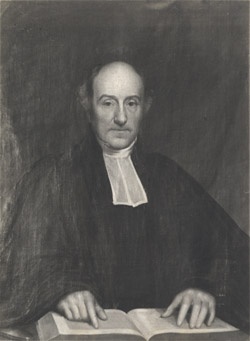
- b. c. 1775, near Forfar, Scotland - d. 10 September 1852, [Edinburgh], Scotland
- appointed Principal Preceptor for the Collegiate School, 1811
- served as President, College of New Brunswick, 1820-1828
- first college-level courses taught by Somerville; of the first three graduates of 1828, two were taught solely by Somerville
- named acting head of King’s College in 1829; later appointed Professor of Divinity and Metaphysics
Edwin Jacob - Term of Office 1829-1859
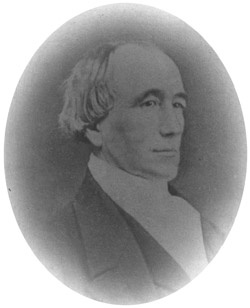
- b. 1793 Gloucester, England - d.1868 [Cardigan Settlement], NB
- initially known as Vice-President of King’s College, since Archdeacon George Coster was the titular President; but after 1848, his office was known as that of “Principal”
- taught Classical Literature, History and Moral Philosophy; later also taught Divinity
- instituted the first Encaenia
- often in conflict with colleagues at the College and with local government officials, as he championed a classical curriculum and resisted pressure to make the college curriculum more practical
- after establishment of UNB in 1859, as a clergyman, he was no longer eligible to serve as President; became Professor of Classics
official portrait painted by Charles MacGregor
Joseph R. Hea - Term of Office 1860-1861
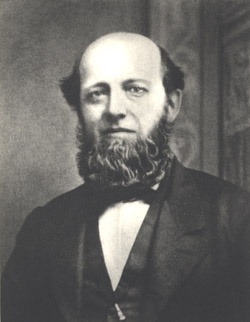
- b. 10 March 1823, Cork, Ireland - d. 8 January 1905, Grand Valley, Dufferin Co., Ontario
- ‘graduated’ from King’s College in 1849; “probably did not attend lectures at Fredericton; under an 1843 provision, as a non-resident student, could write exams for three successive years without actually attending classes"
- taught at the Sackville Academy from 1849-1851
- first President of UNB after its re-chartering in 1859
- students complained he was a harsh disciplinarian
- his tenure was stormy, as Edwin Jacob refused to relinquish any of his Presidential duties; after only one year, Hea was asked to resign
official portrait painted by Lucy Jarvis
William Brydone Jack - Term of Office 1861-1885
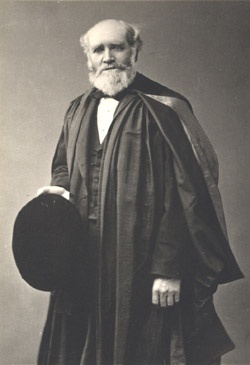
- b. 23 November 1819, Tinwald, Dumfriesshire, Scotland - d. 23 November 1886, Fredericton, NB
- came to King’s College in 1840 to teach Mathematics and Natural Philosophy (i.e. Physics, Astronomy and Chemistry)
- designed the first operational observatory in Canada which was built on campus in 1851
- promoted a more diversified curriculum, to include theoretical science
- encouraged the “higher mental training of females”
- travelled widely throughout New Brunswick bringing UNB to the attention of many high school students
- sought a closer integration of the public school and university-level programmes of study
- during his 24 years as President he oversaw several building projects, the first university investments committee was organised and the first two privately funded scholarships were established
official portrait painted by J.W.L. Forster [John Wycliffe Lowes Forster]
Thomas Harrison - Term of Office 1885-1906
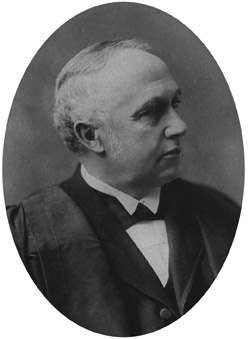
- b. 24 October 1839, Sheffield, NB - d. 18 September 1906, Fredericton, NB
- Professor of English and Moral Philosophy at UNB in 1870; after 1885, President and Professor of Mathematics
- first native New Brunswicker to serve as President
- University Act changed in 1891: title of "President" changed to "Chancellor"; title of "President" passed to the Provincial Chief Superintendent of Education. Chancellor retained duties of President; Chief Superintendent presided over University’s governing body (Senate). Arrangement remained in place until 1931
- women first admitted (1886) during his presidency
- introduced extension classes in Saint John, a four-year BA programme and the BSc degree
- created new professorships held by Loring W. Bailey, William Stockley, and Douglas Hyde
Cecil Charles Jones - Term of Office 1906-1940
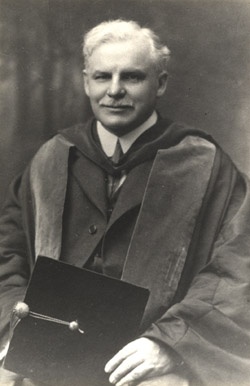
- b. 11 February 1872, Boundary Creek, Westmorland Co., NB - d. 19 August 1943, Fredericton, NB
- President and Chancellor, until 1931; President thereafter
- first UNB graduate to become President
- graduated in 1897; class valedictorian; active on debating team, rugby player, and in YMCA
- Professor of Mathematics
- presided over extensive developments on campus both physical and intellectual: established Forestry programme; initiated affiliation with Saint John Law School and established Summer School in Fredericton
- over his 34-year tenure as President, very popular with the student body; strongly affiliated with students serving in the Great War and active in fund-raising for Memorial Hall
- first President to have a University building named for him - Jones House, 1958
Norman A.M. MacKenzie - Term of Office 1940-1944
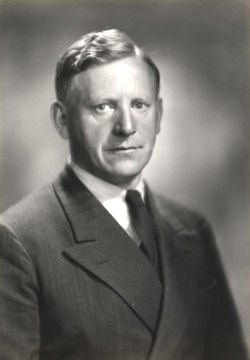
- b. 5 January 1894, Pugwash, NS - d. 26 January 1986, Vancouver, BC
- Law Professor before joining UNB
- war-time President
- urged the incorporation of the province’s normal schools into the University – not accomplished until the 1960s
- extended UNB’s contact with “the outside world” … and lobbied government for veteran’s educational benefits
- later became President of UBC
Milton F. Gregg - Term of Office 1944-1947
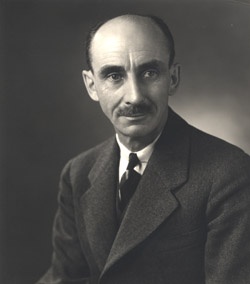
- b. 10 April 1892, Mountain Dale [Snider Mountain], King’s Co., NB - d. 13 March 1978, Fredericton, NB
- distinguished military career in First World War: MC, with bar, and Victoria Cross
- handled the sudden increase in the number of students: between 1944-45 and 1946, the enrollment grew from a predicted 450 (770 in actuality) to 1340 students
- responsible for extensive re-organisation of University administration: created a Board of Deans and set up four faculties and five new departments
- first ‘branch campus’ established, known as Alexander College
- left UNB to serve in federal cabinet of Mackenzie King
A. Foster Baird - Acting President - 1948
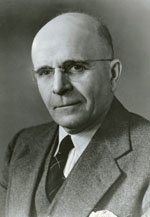
- b. 6 December 1891 Chipman, NB - d. 12 September 1986 Fredericton, NB
- Professor of Electrical Engineering, Dean of Engineering
Albert W. Trueman - Term of Office 1948-1953
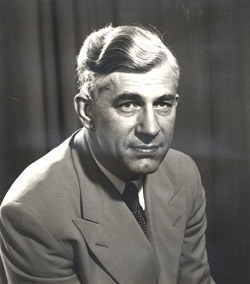
- b. 1902, Waverley, PA - d. 29 June 1988, Ottawa, ON
- oversaw affiliation of Teachers’ College with UNB
- created separate Department of Psychology
- re-established Adult Education
- established extension courses in Saint John in 1950
- recommended revisions to the UNB Act
- left UNB to become Chairman of the National Film Board
C.W. (Bill) Argue - Acting President 1953
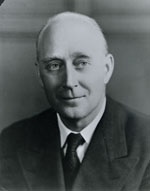
- b. 17 October 1904, Vancouver, BC - d. 4 February 1975, Fredericton, NB
- Professor of Biology, Dean of Science
Colin B. Mackay - Term of Office 1953-1969
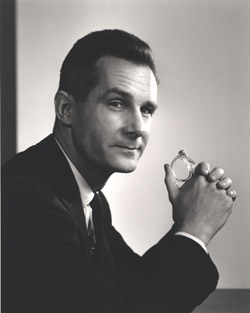
- b. 26 July 1920, Rothesay, NB - d. 25 November 2003, Rothesay/Saint John, NB
- UNB undergraduate, Class of 1942
- only 33 years old when appointed – youngest person to become president of UNB
- presided over an unprecedented period of growth for UNB: new buildings included Student Centre (Alumni Memorial Building), Chemistry building, several men’s residences, Lady Dunn Hall, Loring Bailey Hall
- a time of extensive changes in university governance across Canada; creation of the UNB Board of Governors to look after administrative and business matters, and a new Senate to oversee academic affairs
- enrolment increased from c. 670 students to over 4700
- at the time of his retirement UNB boasted 27 degree programmes
- number of faculty jumped from fewer than 100 to nearly 400
- presided over establishment of UNBSJ
- Teachers’ College absorbed by UNB
- tenure ended during a period of wide-spread student unrest
James O. Dineen - Term of Office 1970-1972
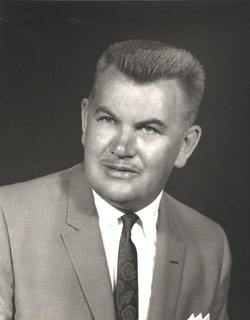
- b. 24 July 1920, Hampton, NB - d. 21 September 1975, Fredericton, NB
- UNB graduate in Electrical Engineering, Class of 1940; Rhodes Scholar
- taught at UNB’s Radio School - 1941
- Became Assistant Professor Electrical Engineering in 1942, later becoming Associate Professor and head of the department
- Appointed Dean of Engineering in 1957
- Named Acting President in 1969
- championed advanced scholarship and research
- presided over the resulting transition in UNB’s governance, after the "Strax Affair"
- term as President cut short by ill-health
Desmond Pacey - Acting President 1972
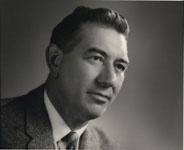
- b. 1 May 1917, Dunedin, New Zealand - d. 4 July 1975, Fredericton, NB
- Professor of English; Dean of Graduate Studies; Vice-President Academic
John M. Anderson - Term of Office 1973-1980
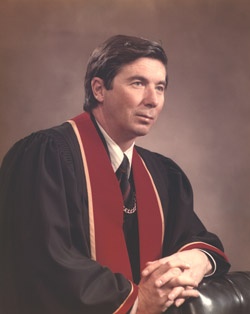
- c. 1958-1963 Assistant Professor of Biology
- returned to NB in 1967 as Director of the Fisheries Research Board, connected with the Biological Research Station at St. Andrews
- instrumental in establishing the Huntsman Marine Science Centre in St. Andrews
- continued campus expansion begun by Dr. Mackay: Athletic Centre opened in Saint John and Integrated University Complex and Aitken Centre in Fredericton
- encouraged new programmes in Acquaculture and Marine Biology
- expanded UNB’s research capacity
- during difficult economic times made the case with governments for increased financial support
- high school summer science programme brought to UNB
- presided over first Saint John convocation
Thomas J. Condon - Acting President 1979-1980
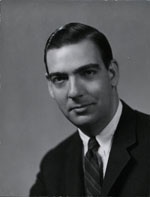
- Professor of History; Dean of Arts; Vice-President UNBSJ
James Downey - Term of Office 1980-1990
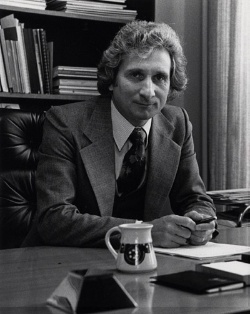
- expanded programmes and facilities on both campuses
- gifted speaker and raconteur, bringing UNB’s story to many campus and community groups
- noted as "a student's president"
- period of great change: new President (Downey), new V-P Academic (Dr. Robert Burridge), new Chancellor (Lady Aitken); faculty certified for collective bargaining as AUNBT
- fiscal restraint of the 1970s continued; management of the University's financial resources became a principal challenge
- dire prospects for enrolment predicted - BUT enrolment increased in all categories over the 1980s
- established and chaired the Committee to Review Inter-Campus Relations (CRICR) which led to the formation of a separate academic senate for UNBSJ and a new measure of autonomy and identity
- presided over the planning for the ambitious bi-centennial celebrations of 1985
- Third Century Fund Campaign launched in 1982, and later surpassed its goal of $10 Million
- UNB Development Office established in 1984 to follow up and build upon the campaign's success
- Futures Fund endowment established in 1986
- two new faculties established: Administration; Computer Science; new undergraduate programmes introduced, including women's studies and several new Masters' and PhD level programmes
- in Fredericton, new buildings included Gillin Hall, Singer Hall and an addition to Ludlow Hall; in Saint John, a new life sciences lab was opened
Robin L. Armstrong - Term of Office 1990-1996
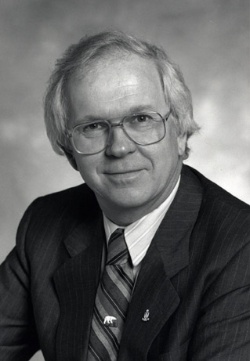
- Venture Campaign, most ambitious fund-raising drive to date established; under his leadership, the campaign exceeded its $30 Million target
- developed a university-wide strategic objectives plan, resulting in a Mission Statement and a Statement of Strategic Objectives
- expanded UNB's research partnerships; created the position of Vice-President for Research and International Co-operation (held by Dr. Frank Wilson)
- new research chairs and research centres established (e.g. space science, pulping technology, research into family violence)
- active faculty member and world-class scholar who continued to supervise graduate students
- attracted a state-of-the-art MRI centre, on the strength of his scholarly reputation
- extensive travel, visiting alumni to raise and maintain UNB's profile nationally and internationally
- first residence on Saint John campus opened - Sir James Dunn Hall
- reformed Encaenia celebrations, creating the present multi-ceremony structure
- student recruitment process was revamped
Elizabeth Parr-Johnston - Term of Office 1996-2002
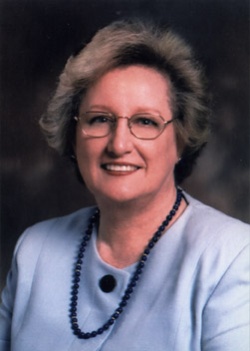
- first female president of UNB
- initiated the “Renewal process” to create a new plan for the University
- established several new chairs and centres (e.g. University Women’s Centre)
- oversaw the creation of Renaissance College (2000), home of UNB's leadership studies bachelor programme, an interdisciplinary curriculum for leadership development
- construction of new buildings on both campuses
- attracted National Research Council E-Commerce Centre to Fredericton campus with satellite in Saint John
- doubled scholarship funding
- re-organised academic administration to strengthen key areas
- established an improved financial planning and control structure
John McLaughlin - Term of Office 2002-2009
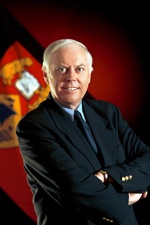
- fourth UNB graduate to have become president (BScSE, 1969; MScSE, 1971)
- joined faculty in 1972
- over the past 25 years, held increasingly responsible administrative positions: Professor and Chair, Geodesy and Geomatics Engineering Department (1985-1991); Vice-President Research & International Co-operation (1997-2000); and Vice-President Academic (2000-20002)
- more than doubled the University's annual research revenues
- developed a visionary land management plan for both campuses
- two new residences and a laboratory-classroom building for the world-class Canadian Rivers Institute were constructed
- in Fredericton, commercial development began on the 3,000-acre woodlot, the proceeds from which will fund further campus improvements
- established the Sir Howard Douglas Society, for Dean’s List students whose extracurricular contributions are also exceptional
- identifed 21 Young Leaders for the 21st Century through the ‘Next New Brunswick’ initiative
- “Making a Significant Difference” - the slogan of the Forging Our Futures Campaign, the largest-ever academic fund-raising venture in Atlantic Canada, raised more than $100 million
- named President Emeritus in 2009
H.E.A. "Eddy" Campbell - Term of Office 2009-2019

- H.E.A. (Eddy) Campbell was the 18th president and vice-chancellor of the University of New Brunswick (2009-2019).
- An internationally recognized professor of mathematics, Dr. Campbell holds two degrees from Memorial University of Newfoundland and a Ph.D. from the University of Toronto.
- Dr. Campbell’s main research interest is the invariant theory of finite groups.
- Upon arriving to UNB in 2009, Dr. Campbell led the development of a strategic plan building on UNB's rich tradition of education, research and community service.
- Dr. Campbell grew UNB’s entrepreneurial ecosystem through the establishment of the Pond-Deshpande Centre and the Master of Technology, Management and Entrepreneurship program.
- Also established under his leadership were several Industrial Research Centres, including the Canadian Institute for Cybersecurity, The Emera & NB Power Research Centre for Smart Grid Technologies and the Marine Additive Manufacturing Centre of Excellence.
- During his tenure, the university was recognized by Startup Canada as Canada’s Most Entrepreneurial Post-Secondary Institution (2014) and more than 120 start-ups were launched by UNB faculty and students.
- Dr. Campbell contributed to boards such as NSERC, Compute Canada, CANARIE, USport and was board chair for Atlantic University Sport.
- An avid athletics fan and a former student-athlete, Dr. Campbell was awarded with the James Born Award for his considerable contributions to the Reds athletic program.
- He led the creation of UNB’s Institutional Equity, Diversity and Inclusion Action Plan, as well as UNB’s Truth and Reconciliation (TRC) Strategic Action Plan, which established UNB’s Piluwitahasuwin (Assistant Vice-President Indigenous Engagement) position.
- Under his leadership, UNB increased student financial aid by $4 million through UNB’s largest-ever fundraising campaign. It Begins Here raised $125 million, half of which was dedicated to student support.
- The Tucker Park Collaborative was established on UNB’s Saint John campus (home to the Dalhousie Medicine Education Centre in partnership with the Saint John Regional Hospital).
- State-of-the-art student and research facilities such as The Richard J. CURRIE CENTER, Hans W. Klohn Commons and new Kinesiology building were constructed.
- UNB was named one of Canada’s Top 100 Employers six times during Dr. Campbell’s presidency (2013, 2014, 2016, 2017, 2018 and 2019). He was personally named among the top 50 CEOs in Atlantic Canada by Atlantic Business Magazine in 2013, 2014 and 2015.
- Main Page
- Anniversaries
- Brief History of UNB
- Buildings
- Faculties and Departments
- Governance and Administrative Positions
- Lecture Series
- Official University Events and Symbols
- People of UNB
- Plaques, Monuments and Structures
- Prizes and Awards
- Sports and Athletics
- Student Clubs and Societies
- Student Events and Escapades
- University Publications
- Women's Sports at UNB
- About UNB Archives and Special Collections
Request an Appointment
Prior arrangements must be made for the retrieval of this material. Please email archives@unb.ca to make an appointment.
Procedures
Help Desk Hours
- Monday - Friday
- 10:00 am - 12:00 pm
- 1:00 pm - 4:00 pm
Contact Us
- 5th Floor, Harriet Irving Library
- University of New Brunswick
- 5 Macaulay Lane, Box 7500
- Fredericton, NB E3B 5H5 Canada
- archives@unb.ca
- Staff Directory